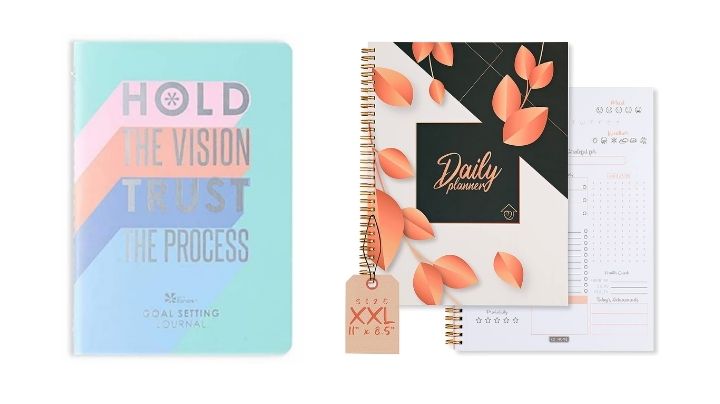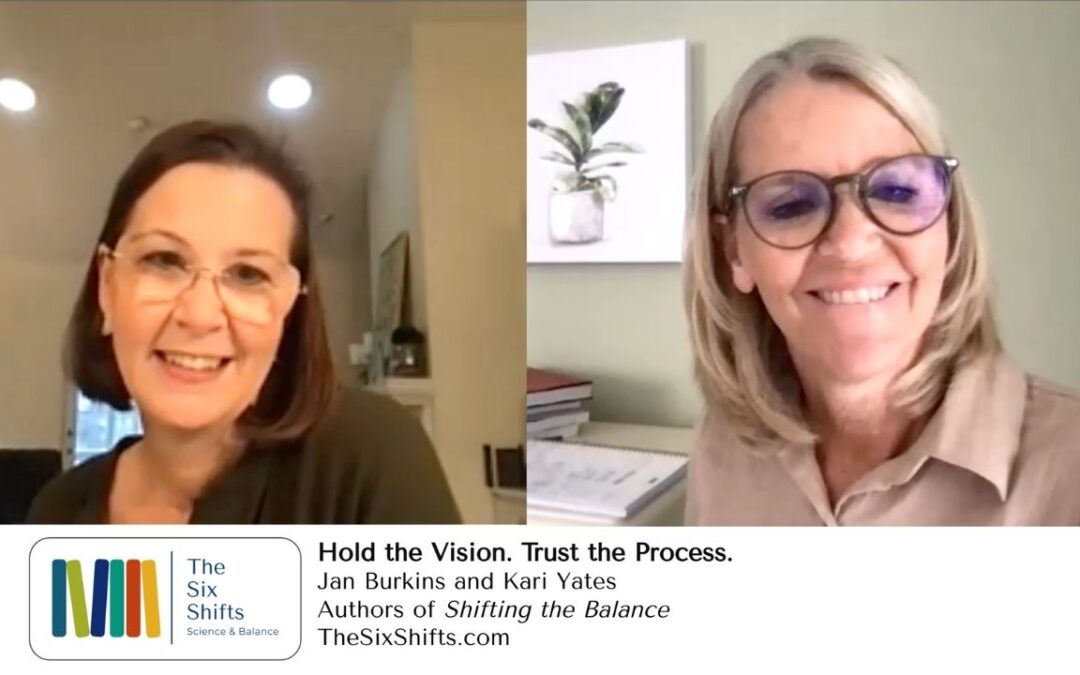You may already know how much we LOVE the New Year with its fresh start and promise.
But, even by the time calendar turns over to February, we can sometimes find ourselves fatiguing and starting to lose sight of our vision.
It’s often easier for us to set big goals–”This time next year, I will be in the best shape of my life”–than it is to figure out how to really make them happen.
At the same time, the big goal is what gives us a vision for possibilities. If we don’t imagine new possibilities for ourselves, then it is unlikely we will muster the resources to make them into realities. But, of course, big goals are made up of many, small steps.
We find that one thing that helps us stay on course with our goals is reminding ourselves of our larger goal regularly–say, once a week–while also zooming in on simple entry points or next-steps during our day-to-day lives.
This tension between the vision and the process is a tricky balance to navigate, but the vision and the process really need each other. They are partners. Vision without regular action is selling ourselves short. Random action without focus and direction fragments our efforts and can leave us arriving confused, spinning our wheels, or at a destination we did not intend.
The work of balancing vision and process is relevant both in our personal lives and in our teaching lives. If you have read The Six Shifts: How to Bring the Science of Reading into the Balanced Literacy Classroom, you may be experiencing a bit of overwhelm as you think about the big picture or an end goal of making all six shifts in practice unfold in connected and comprehensive ways.
But we encourage you to pick a practice (or two) that moves you in the direction of your vision–whether you are revising your practices around high-frequency word instruction or read aloud–and get intentional about enacting that little word, practice, for 30, 60, or even 90 days.
Meanwhile, we also encourage you to remind yourself often of that bigger vision of making learning to read easier for all of your students. Bit-by-bit, with consistency and imagination, we can make big differences in the lives of children.

And if you want a fun pair of tools for setting goals and building momentum through consistent practices, there are two tools we’ve been trying out. They, too, are great partners because one really focuses on the big picture, while the other supports some daily practice:
-
- To help us keep the BIG PICTURE in view, we love this little goal-setting journal. The cover says “Hold the Vision-Trust the Process” and it has color-coded sections for six different goals. Whether you use it to help you get into the best shape of your life or to reinvent your phonemic awareness instruction, the structure of the tool can help you break a larger goal into trackable pieces, while documenting your success along the way.
-
- To help us make good use of each day, we’ve come to love this undated, daily planner tool. One of our favorite things about it is that it not only helps us identify clear “big rock” daily goals and smaller to-do items, but it also helps us remember to maintain some balance in our lives, including water intake, movement, and even awareness of mood.
Here’s to big visions, incremental progress and tools to help us stay focused!
Watch the video version of this post HERE.
Note: We are not Amazon affiliates, so we do not get any money if you purchase this tool. We just wanted to share it with you. 🙂



Thank you for the encouragement. Sharing your personal goals and struggles at this point of the school year is so REAL and timely. Both of you have provided some much needed mid-year inspiration.
As our district continues to strive to increase achievement and shift our practices based on current research, the Shifting the Balance book has become my top reference. Today’s post provided additional supports. The goal setting journal is genius and one that I will use as I lead our teachers in implementing a new reading program. Kari’s quote regarding the” science is clear but the translation to practice can be messy” will be included as well…with the appropriate reference of course. I always look forward to your weekly post as I learn something applicable to my work every time. Thanks again!
We’re so glad you found the post helpful.
And, yes, the journey from science to practice is definitely a potentially messy one. However, one small but intentional step followed by another, day after day, we can make real change for children! ❤️